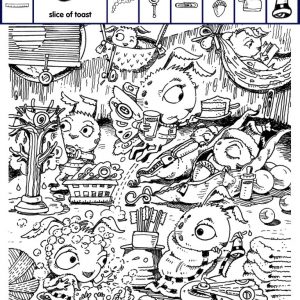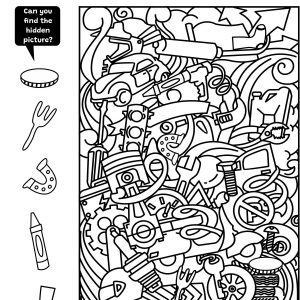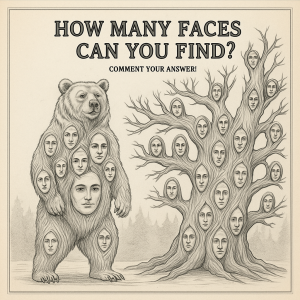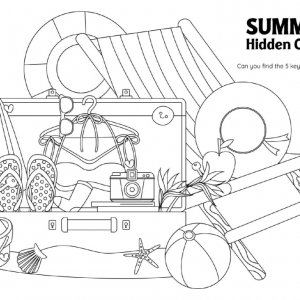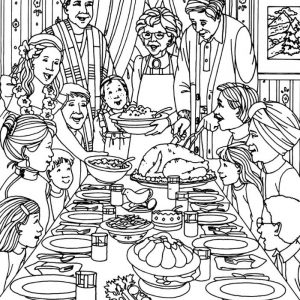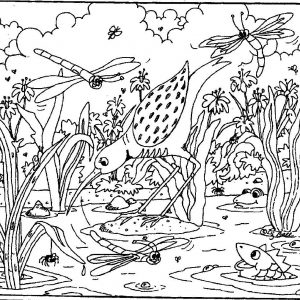The Possums’ Cozy Hideaway: A Hidden Object Adventure in Nature’s Treehouse
There’s something enchanting about a quiet forest scene—especially when it’s filled with tiny surprises waiting to be found. In this whimsical illustration titled “The Possums,” a family of sleepy marsupials nestles comfortably in their tree home. At first glance, it looks like a simple, heartwarming picture. But take a closer look, and you’ll find there’s more hidden among the leaves, bark, and shadows than meets the eye.
This artwork beautifully combines storytelling and puzzle-solving, inviting viewers to slow down and discover its secret details one by one. Let’s explore the charm, artistry, and hidden elements that make this image a delightful feast for curious eyes.
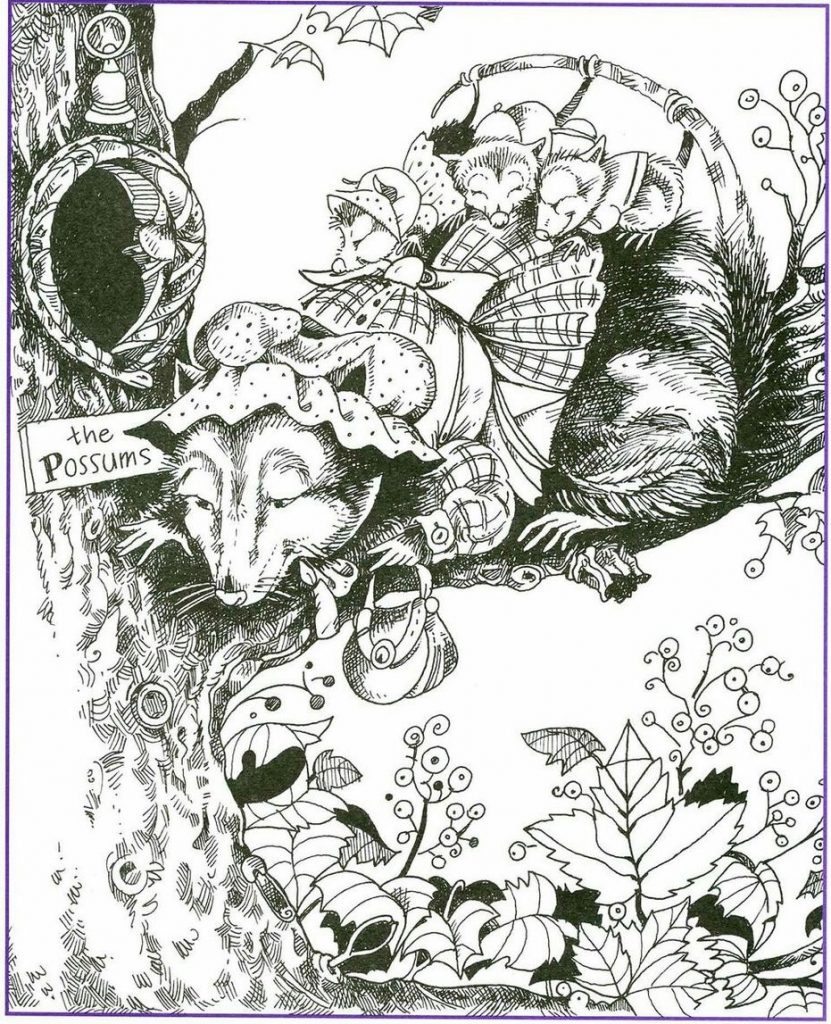
A Peaceful Woodland Scene with a Story to Tell
The illustration captures a tender family moment in the forest. Mama Possum, wearing a bonnet and apron, snoozes peacefully on a sturdy branch while her three little ones curl up on her back. Their tiny bonnets and plaid blankets add a playful, human-like touch that makes the scene feel both cozy and comical.
A sign reading “The Possums” hangs nearby, marking their home in the hollow tree. Surrounding them are leaves, berries, and vines—drawn with intricate detail that invites you to pause and admire the textures. But look closely, and you’ll notice that the scene isn’t as simple as it first appears. Hidden within the forest setting are cleverly disguised objects, each blending seamlessly into the environment.
The Art of Hidden Object Illustration
What makes hidden object illustrations like this one so irresistible is the blend of creativity and challenge. The artist uses shading, texture, and clever composition to hide everyday items among natural shapes. You might spot a shoe hanging from a branch, a hat tucked between leaves, or even a small face peering out from the bark.
This form of art keeps you engaged—it’s like playing a game with your eyes. You scan, pause, and suddenly—there it is! A hidden treasure you hadn’t noticed before. Every discovery brings a tiny spark of joy and a sense of accomplishment, much like finding a four-leaf clover in the grass.

Hidden Treasures in the Possums’ Tree
If you look carefully, you’ll notice several hidden surprises scattered throughout the drawing. The fun lies in spotting them yourself, but here are a few clues to get you started:
- The Hanging Shoe: Just below the branch where Mama Possum rests, a small shoe dangles upside down. It looks like part of the tree’s natural texture until you notice its laces.
- The Forest Home Sign: The sign reading “The Possums” adds a touch of personality, making the tree feel like a real woodland residence. But could there be something else hidden near it—perhaps a small creature or symbol carved into the wood?
- The Hidden Faces: The patterns in the bark and leaves seem to form subtle outlines—almost like faces watching quietly from the background.
- Tiny Accessories: Items like bows, baskets, and bonnets are scattered cleverly around the image, blending into the curved lines of the vines and branches.
Each time you revisit the image, you’re likely to find something new—a small detail that makes you smile and think, How did I miss that before?

Why Hidden Object Puzzles Capture Our Imagination
Hidden object art taps into something fundamental about human nature—our love for discovery. From childhood, we’re drawn to visual puzzles that challenge our attention to detail. But these illustrations do more than entertain; they also offer real mental benefits.
- They sharpen focus. Searching for tiny details trains your brain to notice patterns and differences.
- They boost mindfulness. When you’re absorbed in finding hidden objects, your mind slows down and relaxes.
- They enhance memory. You remember what you’ve seen and where you’ve searched, strengthening your visual recall.
- They spark creativity. The imaginative details encourage you to think beyond what’s obvious.
It’s like meditation through observation—a gentle mental workout wrapped in artistic charm.
A Tale of Warmth and Wonder
Beyond the puzzle itself, “The Possums” tells a story of warmth, family, and home. There’s something universally comforting about seeing a mother and her little ones safe in their nest. The artist adds a sense of whimsy with the possums’ human-like clothing and expressions, making them feel like characters from a bedtime story.
You can almost imagine the rustle of leaves, the faint chirp of crickets, and the soft breathing of the sleeping family. The details draw you in not just visually, but emotionally—it’s a scene that radiates peace.

Tips for Finding Hidden Objects More Easily
If you’re ready to take on the challenge, here are a few tricks to help you uncover every secret in this enchanting picture:
- Start from the edges. Many hidden items are tucked along the borders of the image, where your eyes don’t naturally linger.
- Look for repeating shapes. Artists often use patterns—like leaves or fur—to hide other objects with similar outlines.
- Adjust your focus. Sometimes squinting or stepping back helps the hidden items stand out.
- Scan slowly. Rushing makes your eyes skip over details. Take your time—it’s a discovery, not a race.
The more you look, the more you’ll see—and that’s the real magic of these puzzles.
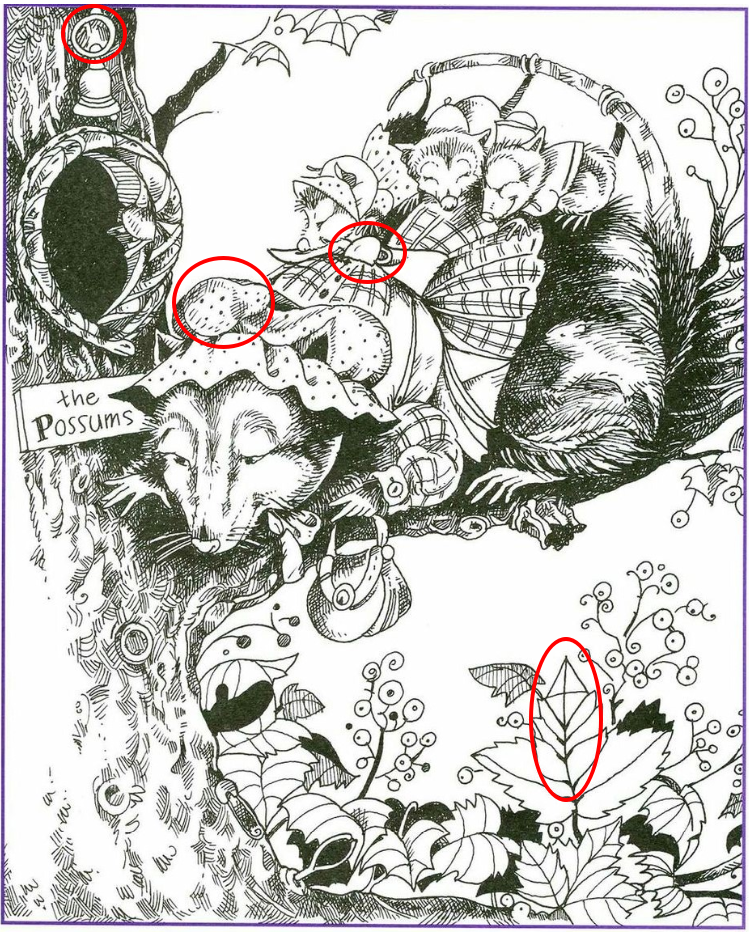
Conclusion: A Cozy Scene Filled with Hidden Magic
“The Possums” is more than just a drawing—it’s a doorway into a quiet world of imagination. With every line, leaf, and curl of fur, the artist invites you to explore, discover, and delight in the small wonders hidden within the scene.
It’s a reminder that even in the simplest moments—a family napping in a tree, a shoe hanging from a branch—there’s beauty waiting to be found if you just take the time to look.
So, the next time you see an illustration like this, don’t just glance and move on. Pause. Observe. Let your curiosity wander. Because sometimes, the most magical stories are hidden right in plain sight.
